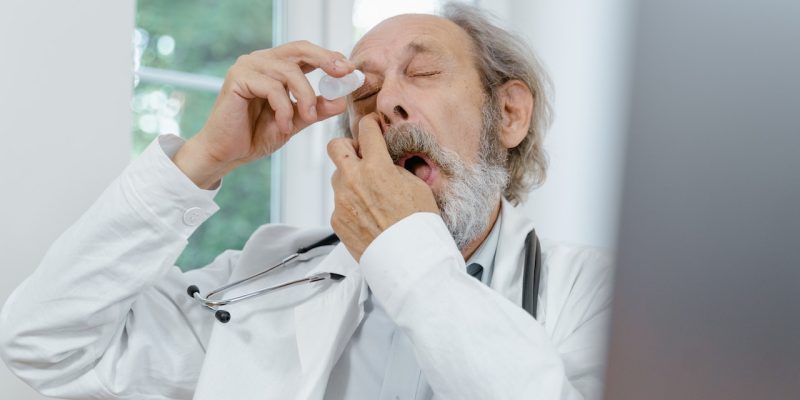Dry eyes can be uncomfortable and even painful. If you’re dealing with dry eyes, you may have turned to over-the-counter eye drops for relief. But are these really the best option? In this blog post, we’ll discuss the science behind dry eyes and explain why using prescription eye drops for dry eyes is the most effective way to treat the condition. We’ll also talk about the different types of eye drops available and offer some tips on how to get the most out of your treatment. So if you want to learn more about why prescription eye drops are a better solution than OTCs, then read on!
What are eye drops?
There are many different types of eye drops available on the market today. The two most common types are artificial tears and anti-inflammatory eye drops. Artificial tears are typically used to lubricate the eyes and help with dryness. Anti-inflammatory eye drops are used to help reduce inflammation and redness in the eyes.
Read More : Sanpaku Eyes
How do they work?
Eye drops for dry eyes typically contain one or more of the following ingredients: artificial tears, antihistamines, and/or decongestants. Artificial tears help to lubricate the eye and can be used as often as needed. Antihistamines can help to reduce inflammation and itching, while decongestants can help to reduce redness.
Pros and Cons
There are a variety of over-the-counter eye drops available to help relieve the symptoms of dry eyes. However, like any medication, there are potential side effects associated with their use. It is important to weigh the pros and cons of using these products before making a decision.
The primary benefit of using eye drops for dry eyes is that they can provide relief from the burning, itching, and redness that are common symptoms of this condition. In many cases, they can help improve vision by increasing tear production. Additionally, they are typically safe for use on a long-term basis.
There are some potential drawbacks to using eye drops for dry eyes, as well. For example, some types of drops can actually make dry eyes worse by causing irritation or by preventing tears from evaporating properly. Additionally, overuse of these products can lead to dependency and may result in rebound redness and irritation when they are discontinued. In rare cases, serious side effects such as allergic reactions or corneal ulcers have been reported. As with any medication, it is important to speak with a doctor before using eye drops for dry eyes to ensure that they are safe and effective for you.
Different types of eye drops
There are different types of eye drops available for people with dry eyes. Some of these eye drops can be bought over the counter, while others require a prescription.
Over-the-counter artificial tears: These eye drops can help to lubricate the eyes and reduce dryness. They are available in both gel and liquid form.
Prescription eye drops: These eye drops can help to increase tear production. They may be recommended for people with more severe dry eye symptoms.
Anti-inflammatory eye drops: These eye drops can help to reduce inflammation and swelling in the eyes. They may be recommended for people with chronic dry eyes or those who have not responded well to other treatments.
Lubricating ointments: These ointments can be used at bedtime to help lubricate the eyes overnight. They may make the vision blurry, so they should not be used before driving or operating machinery.
Read More : Sanpaku Eyes
How to use eye drops
If you have dry eyes, you may be using artificial tears or other eye drops to help relieve your symptoms. Here are some tips on how to use eye drops:
-Tilt your head back and look up.
-With your index finger, pull down the lower eyelid to form a pocket.
-Squeeze the prescribed number of drops into the pocket.
-Close your eyes and gently press your fingers against the inside corner of your eye for two minutes. This will help prevent the drops from draining out of your eye.
-Repeat these steps for your other eye if necessary.
Conclusion
Eye drops for dry eyes can be a great way to help alleviate the symptoms of dry eye syndrome. Whether you choose artificial tears, gels, or ointments, it is important to talk with your doctor about which type of eye drop is best for your particular case. Additionally, remember that lifestyle changes such as avoiding cigarette smoke and using a humidifier in your home may help reduce the effects of dry eyes. With proper treatment and care, you can get back to enjoying crisp clear vision again!







Comments